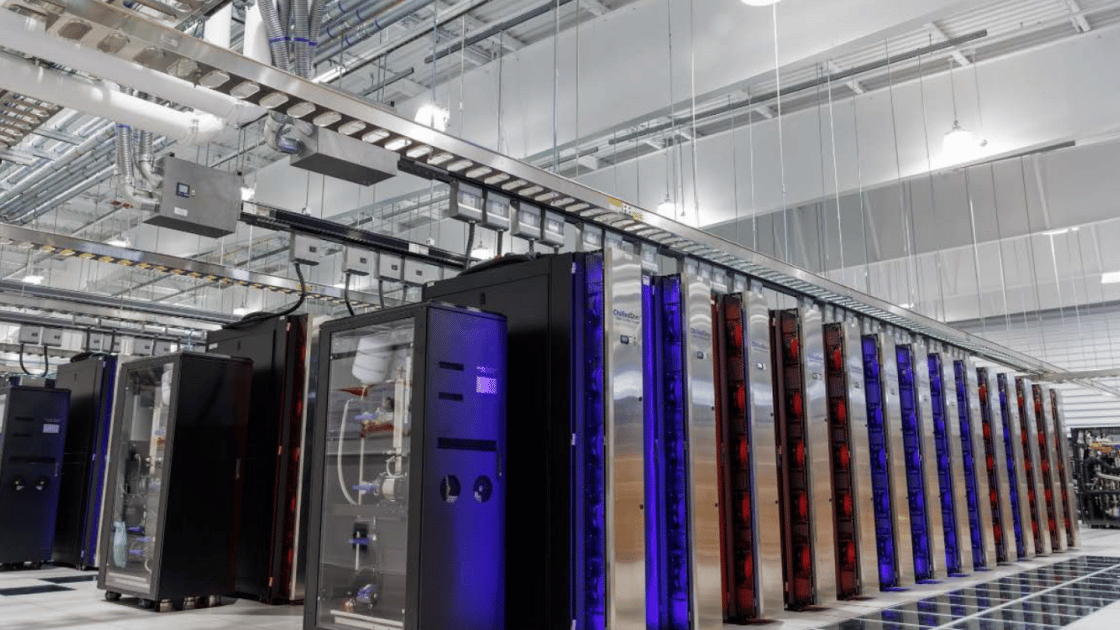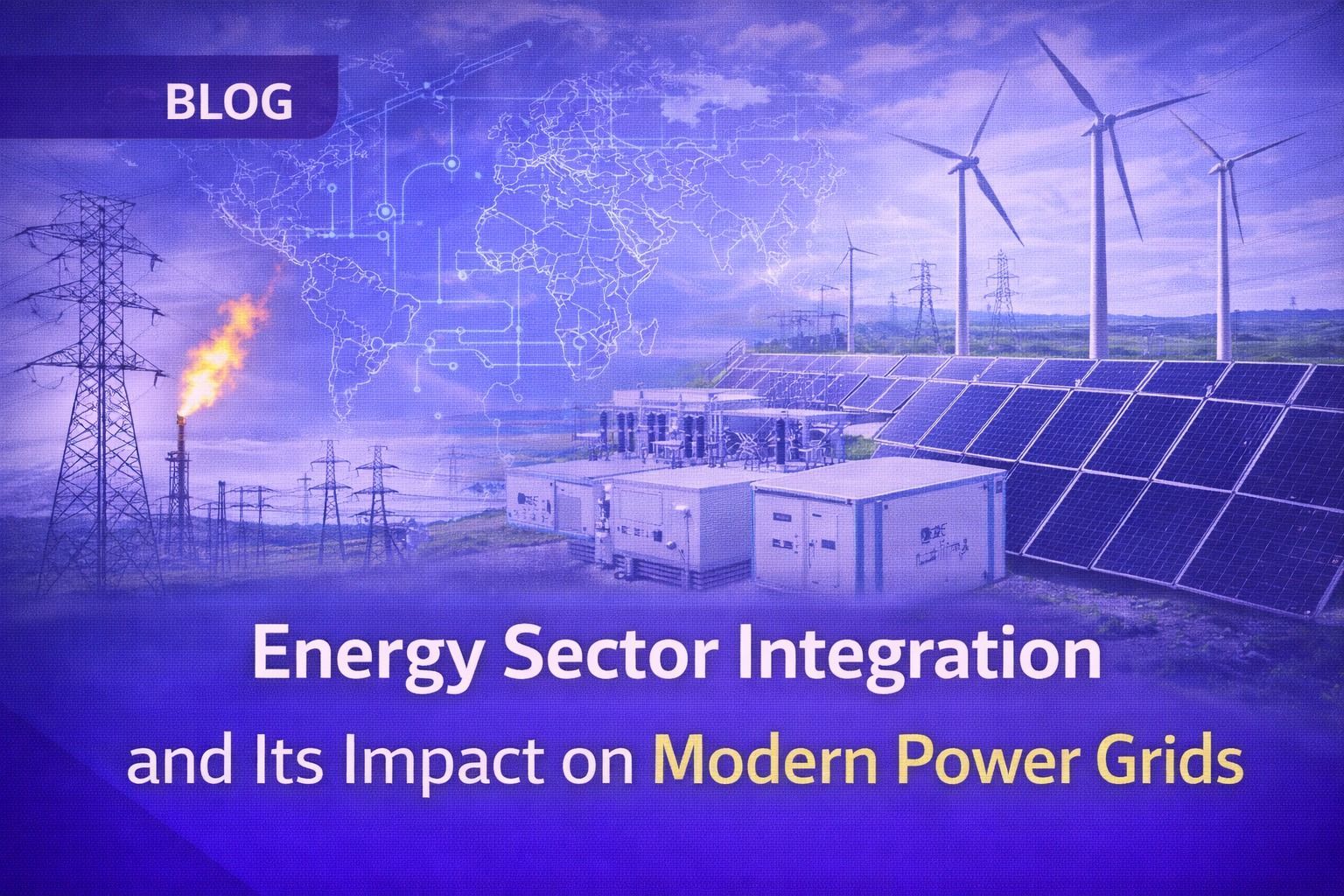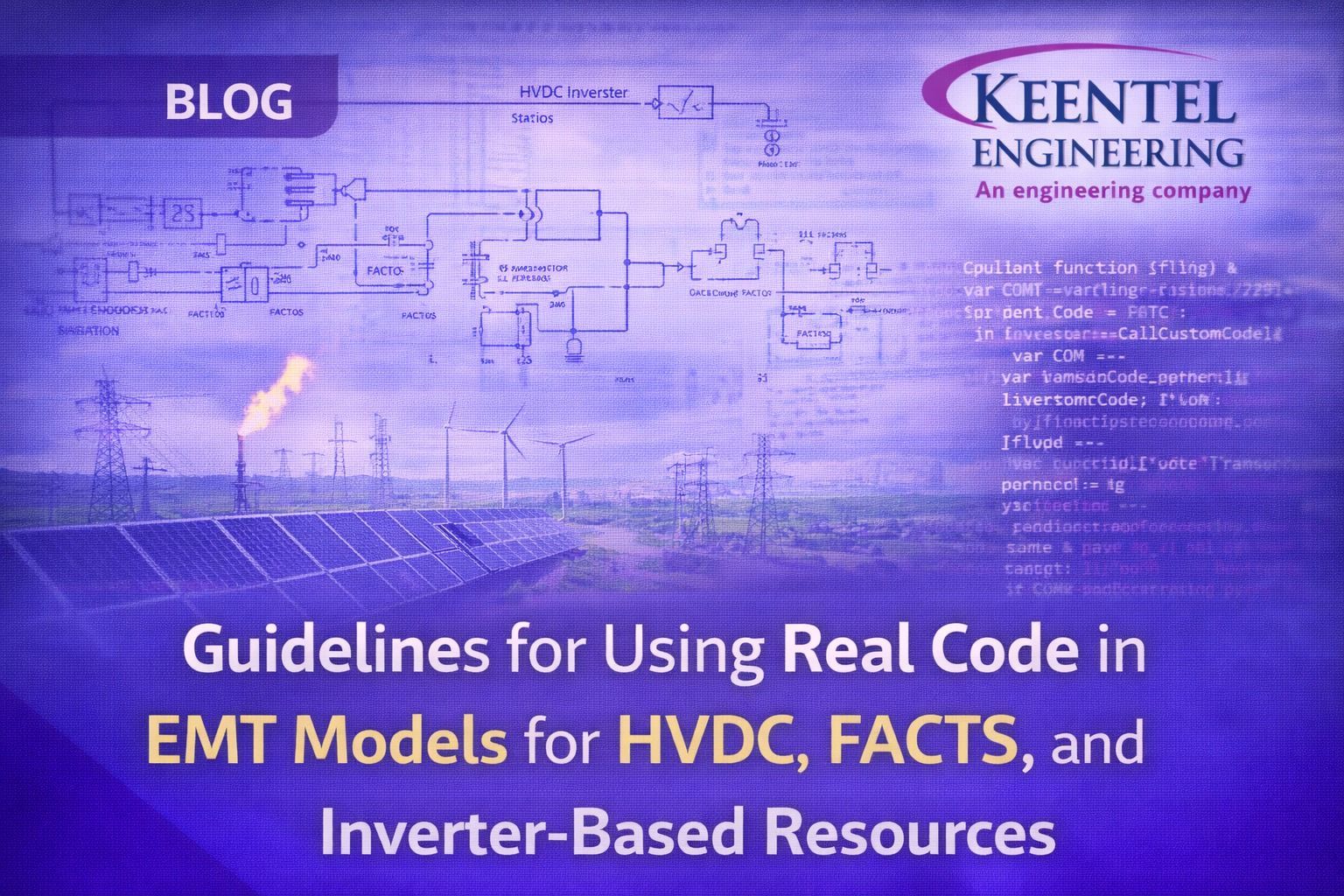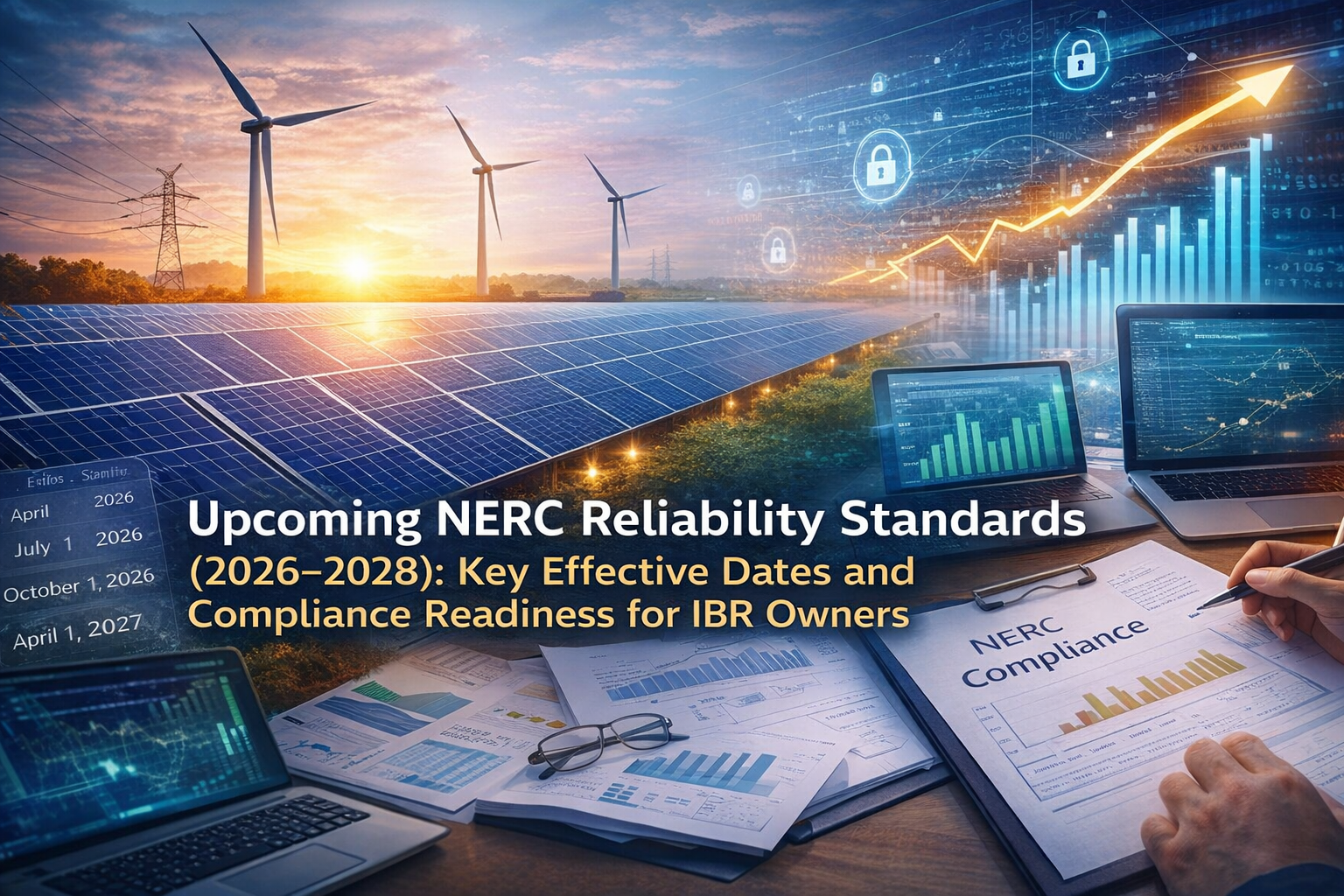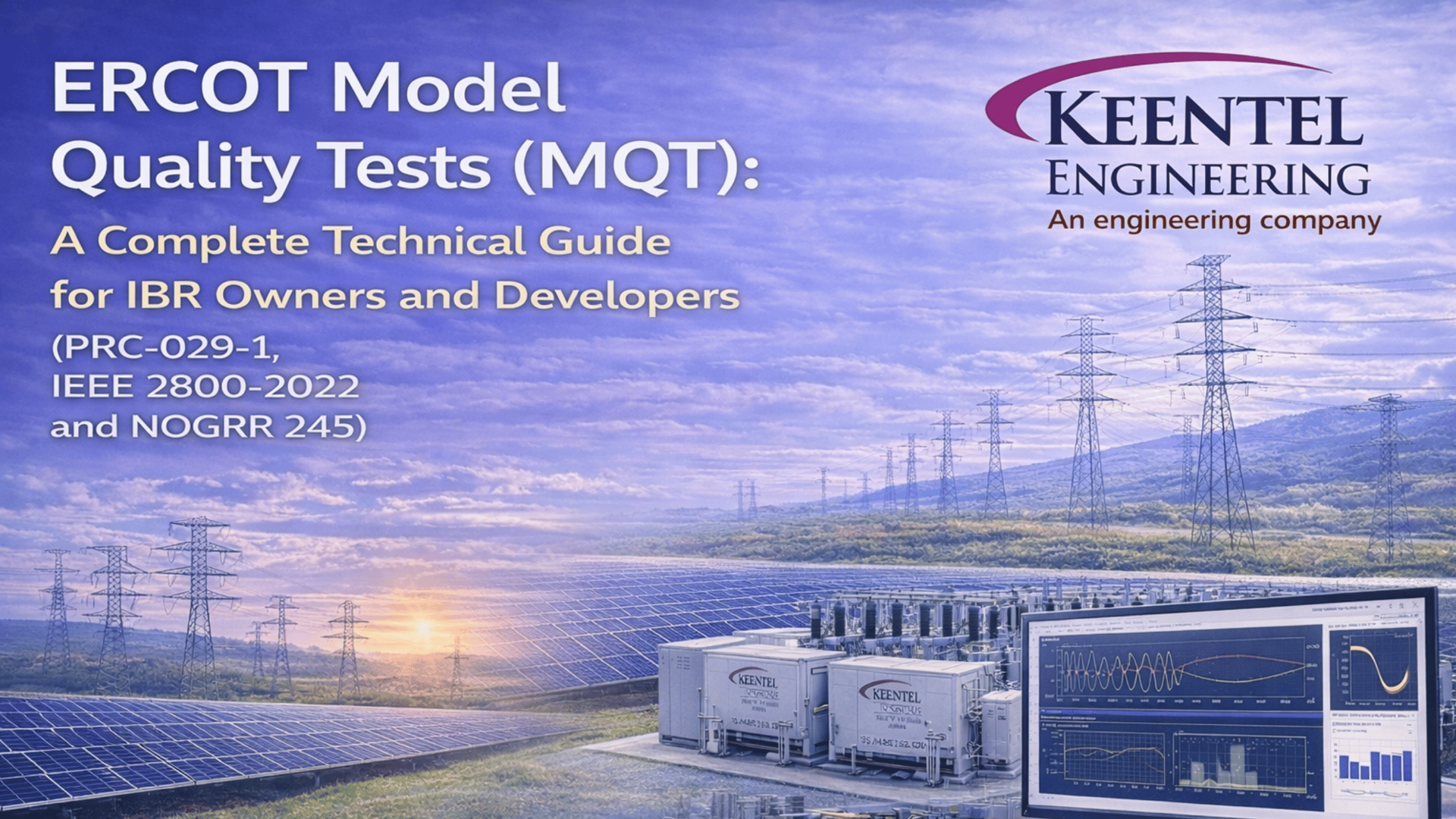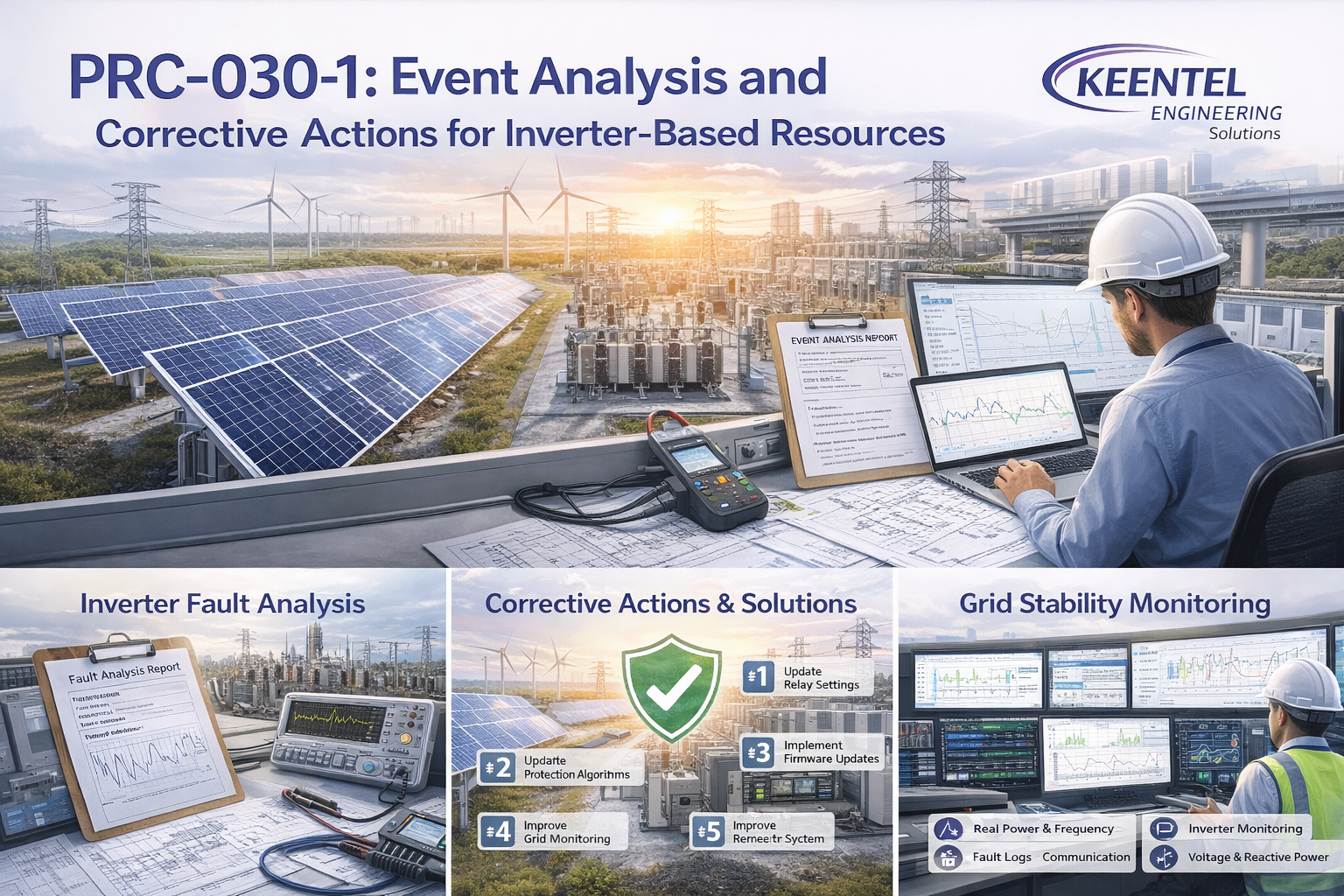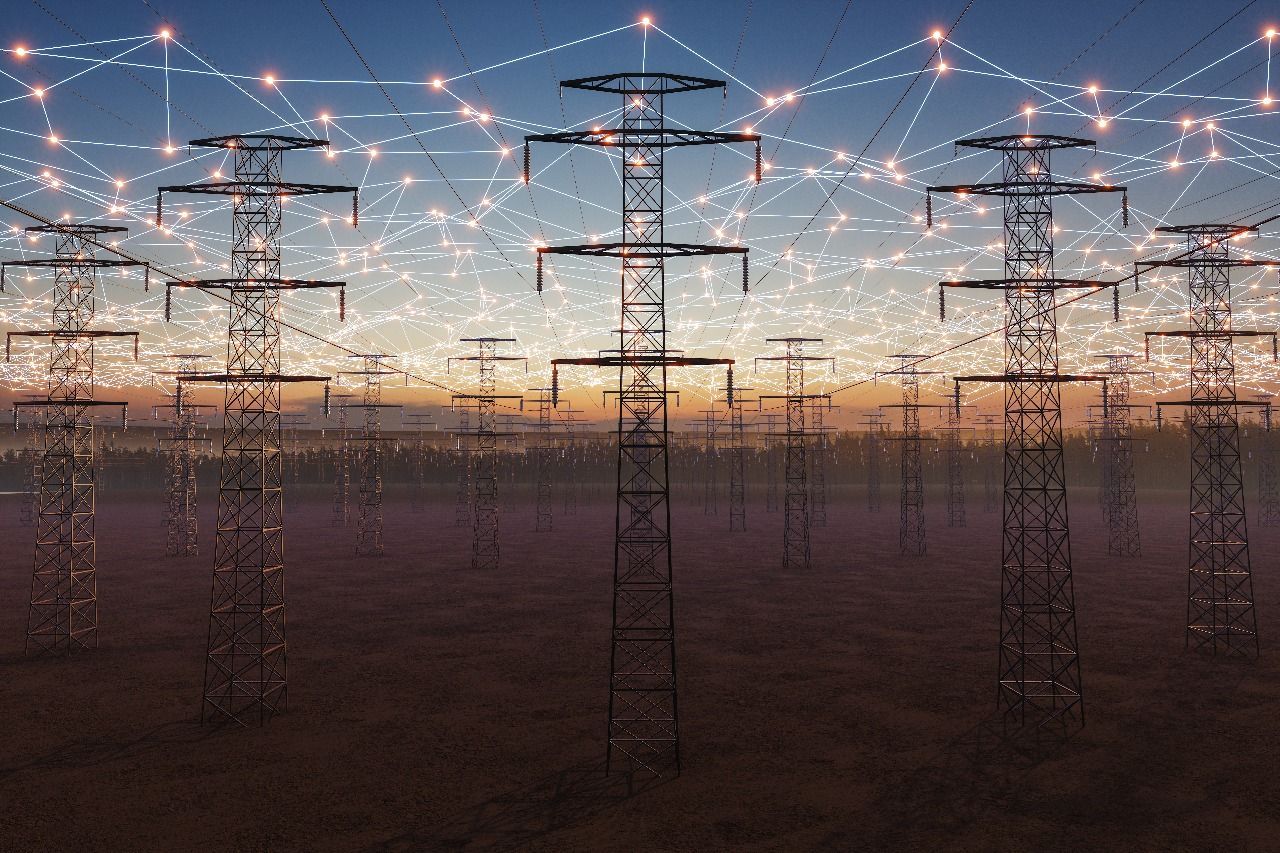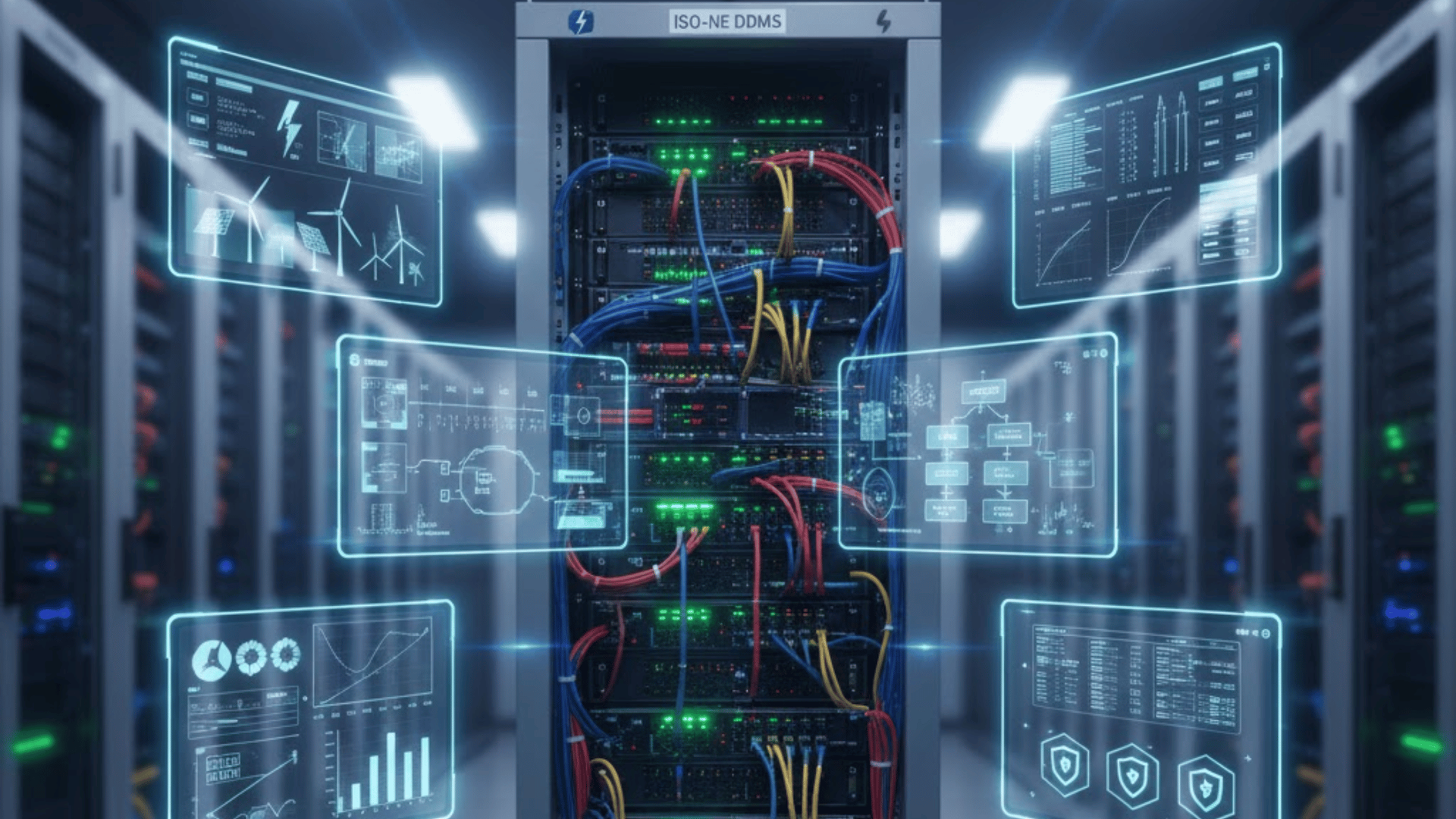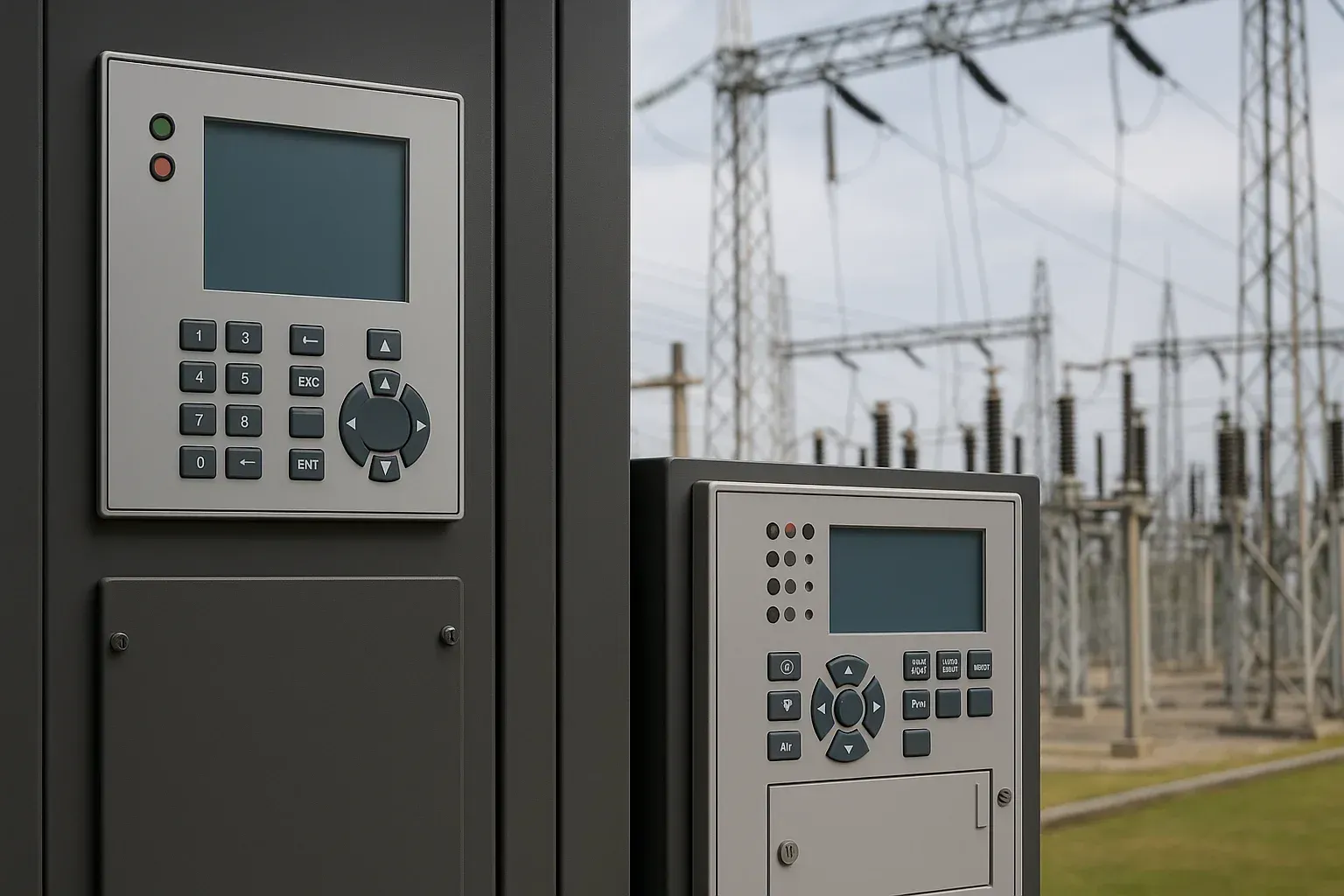A Coordinated Electric System Interconnection Review—the utility’s deep-dive on technical and cost impacts of your project.
Challenge: Frequent false tripping using conventional electromechanical relays
Solution: SEL-487E integration with multi-terminal differential protection and dynamic inrush restraint
Result: 90% reduction in false trips, saving over $250,000 in downtime
Designing for Efficiency: Best Practices in Energy-Efficient Data Center Design
July 02, 2025 | Blog
In an age where digital services power everything from government operations to private enterprise, the energy-efficient data center is the beating heart of our connected world. However, these facilities are notorious for their immense high data center energy consumption. The July 2024 Best Practices Guide for Energy-Efficient Data Center Design, developed by
FEMP and the National Renewable Energy Laboratory (NREL), is a blueprint for transforming data centers into models of efficiency, sustainability, and resilience.
This blog article explores the guide's comprehensive recommendations, categorized into key operational and infrastructural elements including IT systems, environmental conditions, air management, data center cooling systems, power distribution and UPS systems, and performance metrics.
Foundations of Sustainable Data Centers
The guide opens with a clear call to action: reducing energy-efficient data center energy use not only cuts costs but also reduces environmental impact. Efficiency in a data center isn't about a single improvement; it requires a holistic strategy:
- Minimize energy use with efficient IT, data center cooling systems, and power systems.
- Reuse waste heat reuse where possible.
- Reduce water use for cooling.
- Shift to renewable energy to improve the Carbon Usage Effectiveness (CUE).
This approach is centered around key metrics like
Power Usage Effectiveness (PUE), Water Usage Effectiveness (WUE), Energy Reuse Effectiveness (ERE), and Carbon Usage Effectiveness (CUE).
Optimizing IT Systems for Performance and Efficiency
IT systems are the largest energy consumers in an energy-efficient data center. Optimizing them has a domino effect on data center cooling systems and power infrastructure. Key strategies include:
Cloud and Colocation Services
Organizations can save energy and reduce operating costs by leveraging cloud computing or colocation services instead of building on-premises infrastructure.
Efficient Servers
Modern servers offer:
- Variable speed fans
- ENERGY STAR® certified performance
- Better performance-per-watt
Using multi-core processors and right-sizing server usage improves utilization efficiency significantly.
Efficient Storage and Networking
- Thin provisioning ensures storage is not over-allocated.
- Idle-state logic and buffer optimization in network equipment reduce standby power.
High-Efficiency Power Supplies
Choosing 80 PLUS® Titanium-rated power supplies boosts efficiency to over 90%, minimizing conversion losses and easing the cooling load.
Environmental Conditions and ASHRAE Standards
The 2021 ASHRAE data center standards provide environmental envelopes for equipment operation:
- Recommended Range: Ensures reliability and efficiency (18–27°C or 64.4–80.6°F).
- Allowable Range: Safe functional limits, tested but not always efficient.
Raising server inlet temperatures within recommended ranges can reduce cooling loads but must be carefully managed to avoid excessive fan usage.
See Keentel Engineering
MEP Engineering Services.
Advanced Air Management Strategies
Effective airflow management is essential for preventing hot spots, improving data center cooling efficiency, and reducing energy waste.
Cable Management
Removing abandoned cables and organizing wiring promotes unobstructed airflow, helping maintain consistent rack inlet temperatures and eliminating localized overheating.
Aisle Containment Systems
Implementing hot aisle/cold aisle containment—using sealed overhead plenums, floor grommets, and airflow baffles—prevents mixing of hot and cold air streams. This significantly improves cooling system performance and supports energy-efficient operation.
Supply and Return Optimization
Choosing between under-floor and overhead air distribution systems depends on facility design and thermal load zones. Pairing these with variable air volume (VAV) diffusers allows the system to dynamically adapt to real-time IT heat output.
Temperature Setpoint Adjustments
Raising supply and return air temperatures within ASHRAE-recommended thresholds can:
- Enhance economizer efficiency
- Enable standard HVAC units to operate more efficiently
- Allow for higher chilled water temperatures, improving chiller performance and reducing compressor energy consumption
Cooling Systems: From DX to Liquid Cooling
Cooling infrastructure represents a major share of data center energy usage. The FEMP guide recommends scalable, high-efficiency solutions to support sustainability and uptime.
Direct Expansion (DX) Units
Best suited for small and edge data centers, DX systems can be enhanced with evaporative cooling or air-side economizers to boost energy efficiency and reduce mechanical load.
Centralized Air Handlers
These systems offer superior part-load cooling performance and are well-suited for integration with economizers and hot aisle/cold aisle containment strategies to improve airflow efficiency.
High-Efficiency Chilled Water Systems
Optimized system design includes:
- VFD (Variable Frequency Drive) chillers
- Oversized cooling towers with low approach temperatures
- Variable flow pumping and optimized temperature differentials (ΔT values)
These strategies improve chilled water system efficiency while lowering overall PUE.
Free Cooling Solutions
- Air-side economizers deliver full or partial cooling using ambient air in favorable climates.
- Water-side economizers excel in colder regions, enabling chilled water storage and thermal energy buffering for load shifting.
Direct Liquid Cooling
A next-gen approach for high-density computing environments, liquid cooling systems efficiently dissipate heat via:
- Rear-door heat exchangers
- Cold plates
- Single-phase and two-phase immersion cooling technologies
Aligned with higher ASHRAE W-classes (W32–W45), this method significantly improves free cooling potential and thermal transfer efficiency.
See Keentel Engineering
Utility-Scale BESS Engineering Services.
Electrical Systems: Enhancing Distribution and Efficiency
Efficient electrical infrastructure design plays a crucial role in reducing total energy usage and improving system reliability in modern data centers.
Uninterruptible Power Supply (UPS)
Modern UPS systems now achieve greater than 95% efficiency.
- Enable eco-mode operation to reach up to 99% efficiency.
- Right-size UPS units to maintain optimal load factors and avoid energy waste from underutilized capacity.
Power Distribution Units (PDUs)
- Select dry-type transformers with a lower temperature rise to reduce core losses.
- Optimize voltage distribution strategy and physical PDU placement to minimize conductor resistance and heat loss.
DC Power Distribution
Although not yet widely adopted, DC power distribution is gaining traction in large-scale data centers as it significantly reduces AC-to-DC conversion losses. It also supports next-gen rack and server-level efficiencies.
Demand Response & Intelligent Lighting
- Enroll in utility demand response programs to take advantage of peak-time incentives and grid reliability.
- Deploy occupancy-based controls and energy-efficient LED lighting systems to lower base energy load and enhance automation.
Harnessing Waste Heat
Waste heat recovery is an increasingly valuable strategy for improving overall data center energy efficiency. Instead of venting heat as a byproduct, facilities can repurpose it to support nearby thermal needs, reducing carbon footprint and operating costs.
Waste Heat Can Be Reused In
- Preheating ventilation air for HVAC systems
- District heating networks serving adjacent buildings or campuses
- Domestic hot water systems for on-site or nearby facilities
Conditions Favorable for Waste Heat Utilization
- Proximity to a qualified heat host (e.g., commercial or residential load centers)
- Temperature compatibility between recovered heat and thermal demand
- Regulatory incentives or shared infrastructure ownership models that enable cost-effective implementation
Benchmarking Metrics for Continuous Improvement
To ensure ongoing data center performance optimization, the FEMP guide emphasizes tracking key operational metrics that directly impact efficiency, sustainability, and compliance.
Power Usage Effectiveness (PUE)
- A primary metric for measuring overall energy efficiency
- Industry average is 1.55, while top-tier data centers reach below 1.1
Energy Reuse Effectiveness (ERE)
- Promotes waste heat reuse strategies
- Values under 1.0 demonstrate successful heat recapture and reintegration
Water Usage Effectiveness (WUE) & Carbon Usage Effectiveness (CUE)
- Track data center water consumption and carbon emissions
- Support ESG targets and holistic sustainability reporting
Advanced Cooling & Airflow Metrics
- Rack Cooling Index (RCI): Measures compliance of IT intake air temperatures with ASHRAE standards
- Airflow Efficiency (Watts per CFM): Assesses how efficiently air is delivered to IT equipment
- Cooling System Efficiency (kW/ton): Evaluates HVAC energy intensity
- ISO/IEC 30134 KPIs: Provide standardized global benchmarks for energy, water, and reuse metrics
Conclusion: Roadmap to a Greener Digital Future
By adopting these best practices, energy-efficient data centers can drastically reduce their power consumption, carbon footprint, and O&M costs. The FEMP guide provides a strategic roadmap for building digital infrastructure that’s both resilient and future-ready.
Keentel Engineering is committed to helping organizations implement these standards through substation design, NERC compliance, and SCADA-integrated grid engineering services.
FAQs: Energy-Efficient Data Center Design
What is Power Usage Effectiveness (PUE)?
PUE is a metric for measuring data center energy efficiency, calculated as the ratio of total facility energy to IT equipment energy. A lower PUE means more efficient energy use.
What is the typical PUE for modern data centers?
Most data centers operate around 1.55; energy-optimized facilities aim for a PUE below 1.2.
Why is airflow management so critical in data centers?
Poor airflow design leads to hot spots, unnecessary overcooling, and wasted energy. Proper air management improves cooling system efficiency.
What are ASHRAE A1–A4 thermal classes?
These define thermal operating envelopes for IT hardware. Class A1 is the most conservative; Class A4 supports higher ambient temperatures.
How does hot aisle/cold aisle containment work?
This strategy separates hot and cold air paths to enhance cooling airflow efficiency and reduce recirculation.
What are air-side economizers?
They use cool outside air to provide free cooling when environmental conditions allow, reducing mechanical chiller use.
What is direct liquid cooling?
A method that removes heat by using liquids—like water or dielectric fluids—directly at server components, ideal for high-density computing environments.
How can server efficiency be improved?
Use ENERGY STAR® certified servers, consolidate workloads through virtualization, and improve processor utilization rates.
What is the Rack Cooling Index (RCI)?
RCI is a compliance metric showing how well IT intake air temperatures stay within recommended ASHRAE cooling guidelines.
How does virtualization contribute to energy efficiency?
It reduces the number of physical servers required, minimizing power and cooling energy demand.
Why consider DC power distribution?
DC distribution reduces energy losses from multiple AC-DC conversions and supports high-efficiency electrical systems at scale.
What is Energy Reuse Effectiveness (ERE)?
ERE tracks how much waste heat is reused instead of expelled. Values under 1.0 indicate effective heat recovery.
Can waste heat be reused in every data center?
Only when a heat host is nearby and proper infrastructure (e.g., piping, exchangers) is available to capture and transfer the heat.
What are the benefits of centralized air handling units?
They improve part-load cooling performance, simplify humidity control, and integrate easily with economizer systems.
What is the importance of UPS load factor?
Higher UPS load factors improve system efficiency and prevent energy waste caused by oversized UPS units.
What are 80 PLUS® power supplies?
These are high-efficiency power supplies with certifications (e.g., Titanium) that reach up to 92% AC-DC conversion efficiency.
How can thermal storage benefit data centers?
Thermal storage shifts cooling demand to off-peak hours, improves redundancy, and supports grid-friendly load balancing.
Why monitor water usage in data centers?
To optimize Water Usage Effectiveness (WUE) and reduce dependency on water-intensive cooling methods.
What is the Cooling System Efficiency benchmark?
Efficient cooling systems operate around 0.8 kW/ton; top-performing systems can reach 0.6 kW/ton or better.
What tools are available for data center energy assessments?
FEMP’s DCEP training, DOE’s Air Management Tool, and LBNL’s benchmarking guides are widely used by industry professionals.
Ready to Build a Smarter, More Efficient Data Center?
Whether you're optimizing an existing facility or designing from the ground up, Keentel Engineering is here to support your energy efficiency goals. Our team specializes in:
- Data center electrical and cooling system design
- UPS and DC power distribution strategies
- ASHRAE-compliant airflow planning
- Energy benchmarking and regulatory alignment (PUE, ERE, WUE, CUE)
- NERC-compliant infrastructure engineering
Connect with our experts to schedule a consultation and discover how to reduce operational costs while improving resilience.
Contact us: keentelengineering.com/contact

About the Author:
Sonny Patel P.E. EC
IEEE Senior Member
In 1995, Sandip (Sonny) R. Patel earned his Electrical Engineering degree from the University of Illinois, specializing in Electrical Engineering . But degrees don’t build legacies—action does. For three decades, he’s been shaping the future of engineering, not just as a licensed Professional Engineer across multiple states (Florida, California, New York, West Virginia, and Minnesota), but as a doer. A builder. A leader. Not just an engineer. A Licensed Electrical Contractor in Florida with an Unlimited EC license. Not just an executive. The founder and CEO of KEENTEL LLC—where expertise meets execution. Three decades. Multiple states. Endless impact.
Services

Let's Discuss Your Project
Let's book a call to discuss your electrical engineering project that we can help you with.

About the Author:
Sonny Patel P.E. EC
IEEE Senior Member
In 1995, Sandip (Sonny) R. Patel earned his Electrical Engineering degree from the University of Illinois, specializing in Electrical Engineering . But degrees don’t build legacies—action does. For three decades, he’s been shaping the future of engineering, not just as a licensed Professional Engineer across multiple states (Florida, California, New York, West Virginia, and Minnesota), but as a doer. A builder. A leader. Not just an engineer. A Licensed Electrical Contractor in Florida with an Unlimited EC license. Not just an executive. The founder and CEO of KEENTEL LLC—where expertise meets execution. Three decades. Multiple states. Endless impact.
Leave a Comment
We will get back to you as soon as possible.
Please try again later.

